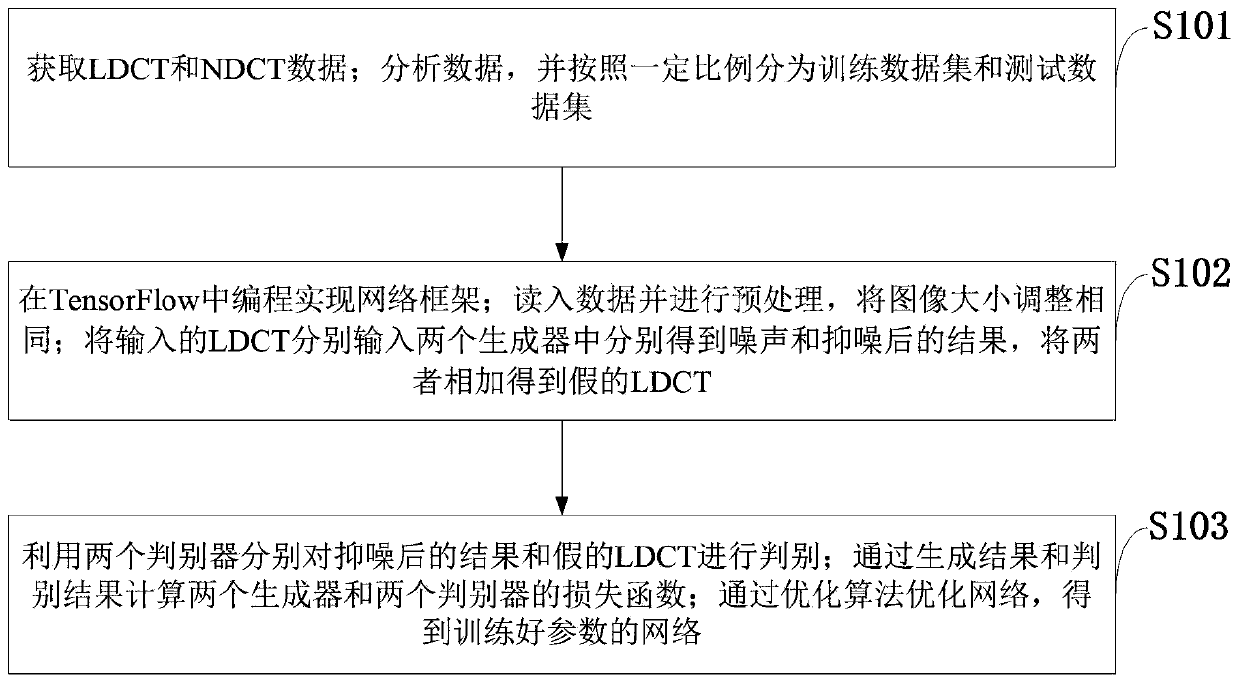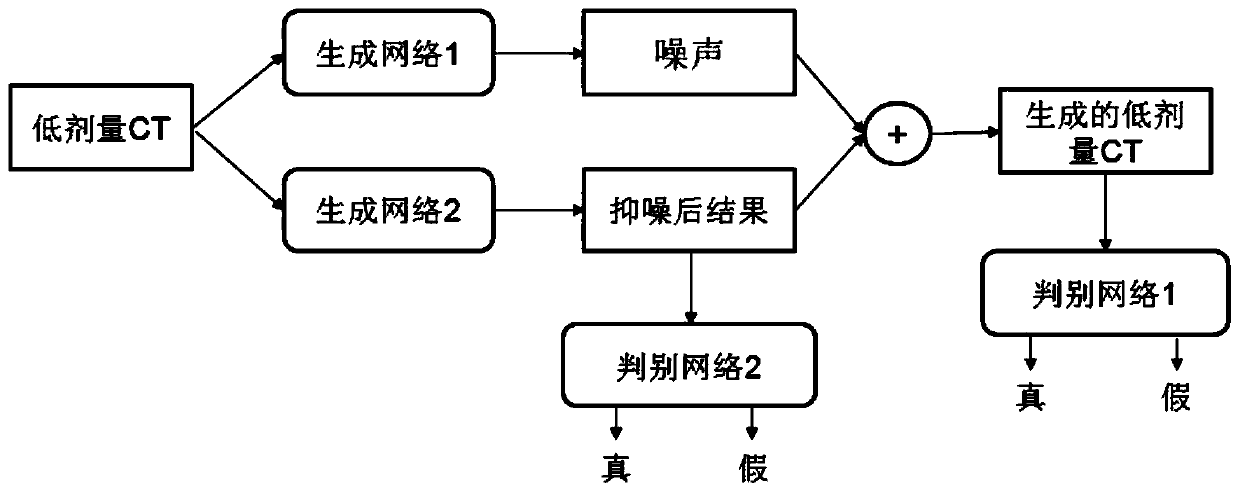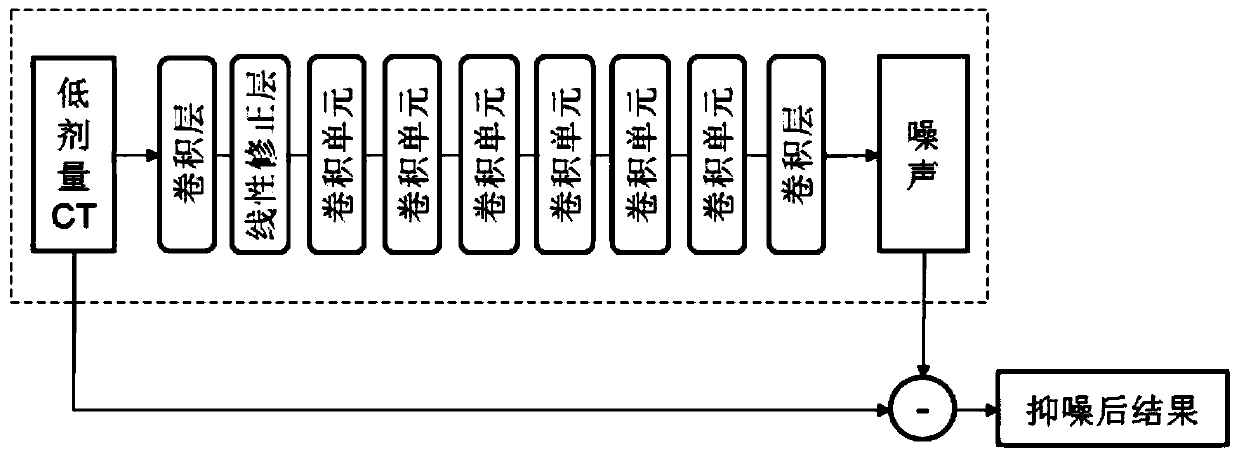An unregistered low-dose CT denoising method based on an adversarial generative network and a computer
A low-dose, network technology, applied in the field of medical image processing, can solve problems such as no correspondence, low peak signal-to-noise ratio and structural similarity, and affect diagnostic results, etc., to achieve LDCT noise reduction, high degree of automation, and learning ability strong effect
- Summary
- Abstract
- Description
- Claims
- Application Information
AI Technical Summary
Problems solved by technology
Method used
Image
Examples
Embodiment Construction
[0047] In order to make the object, technical solution and advantages of the present invention more clear, the present invention will be further described in detail below in conjunction with the examples. It should be understood that the specific embodiments described here are only used to explain the present invention, not to limit the present invention.
[0048] The existing technology needs specific methods to achieve noise reduction for unpaired data; the effect of applying LDCT noise reduction is not good. The method of the present invention is based on unmatched LDCT and NDCT image pairs, which is more convenient for users to solve the problem of LDCT noise reduction.
[0049] The application principle of the present invention will be described in detail below in conjunction with the accompanying drawings.
[0050] Such as figure 1 As shown, the denoising method for unregistered low-dose CT based on the adversarial generative network provided by the embodiment of the pre...
PUM
 Login to View More
Login to View More Abstract
Description
Claims
Application Information
 Login to View More
Login to View More - R&D
- Intellectual Property
- Life Sciences
- Materials
- Tech Scout
- Unparalleled Data Quality
- Higher Quality Content
- 60% Fewer Hallucinations
Browse by: Latest US Patents, China's latest patents, Technical Efficacy Thesaurus, Application Domain, Technology Topic, Popular Technical Reports.
© 2025 PatSnap. All rights reserved.Legal|Privacy policy|Modern Slavery Act Transparency Statement|Sitemap|About US| Contact US: help@patsnap.com



